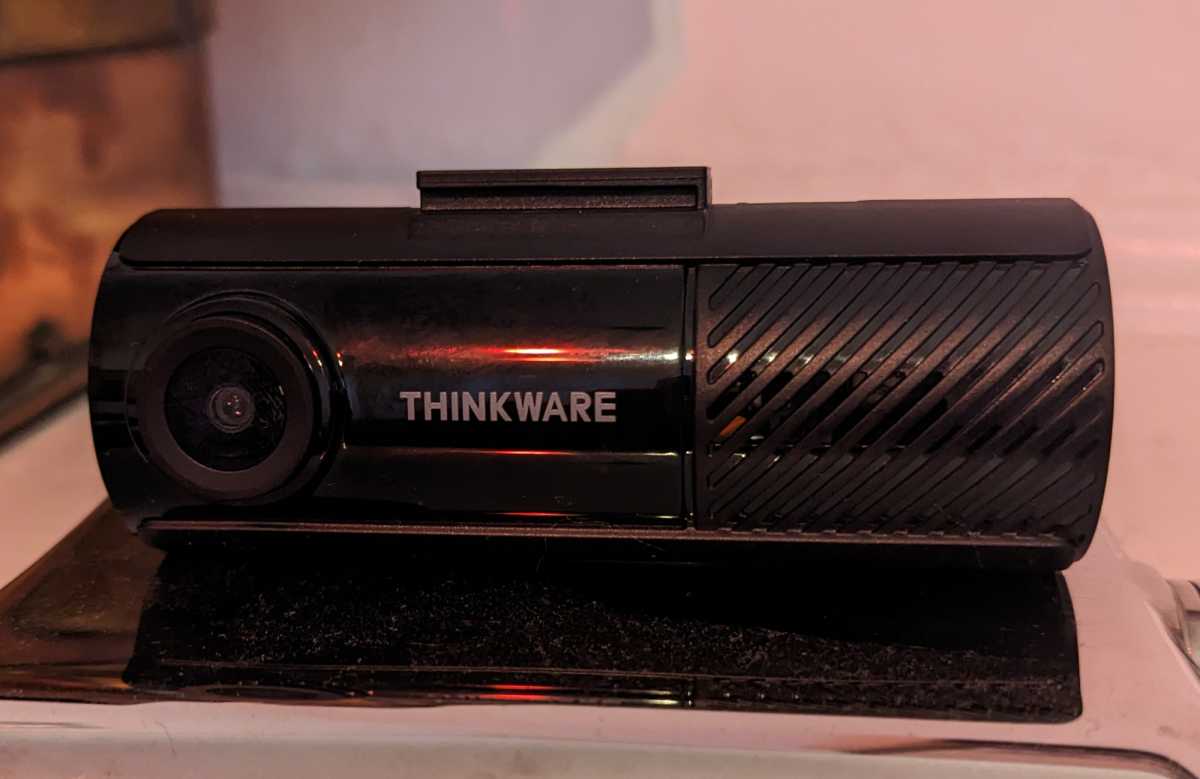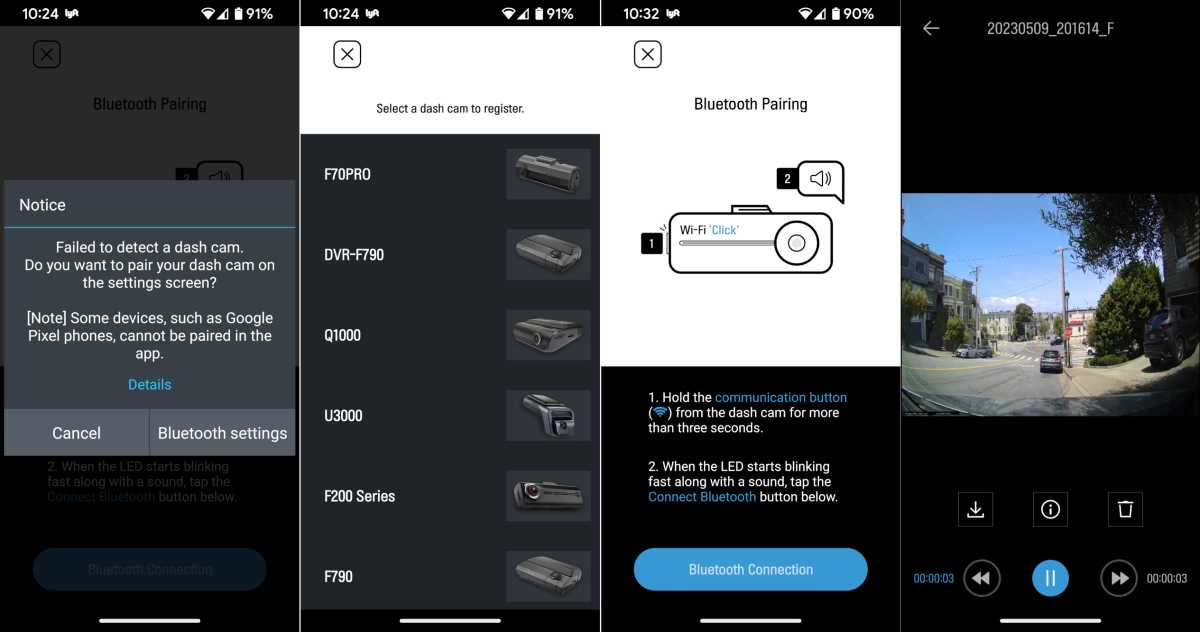Expert's Rating
Pros
- Workable 1080p captures
- Wi-Fi and Bluetooth connectivity
- Phone app for settings and live view
Cons
- No GPS (optional accessory)
- Parking mode requires additional hardwiring or OBDII cabling
- No display for adjusting settings without your phone
- App doesn’t work with all devices
Our Verdict
While the F70 Pro handles the basics well, and we like the phone app, the lack of integrated GPS and a few other omissions have us wondering exactly why this is labeled “Pro.”
The $100 Thinkware F70 Pro is a mixed bag of a dash cam experience. With 1440p now common, the F70 Pro’s 1080p is notable by comparison, and its captures are hardly the best we’ve seen at that resolution.
The camera is svelte and handsome; however, it lacks a display — instead relying on the phone app for viewing and configuration. That would be fine, but the app doesn’t support the rather popular Google Pixel phone. Additionally, GPS is a $40 external option, and without purchase of a constant power cable (hard-wire, OBDII), parking surveillance can’t be used.
Given all that, quite frankly, we’re wondering exactly why it’s labeled as “Pro.”
Further reading: See our roundup of the best dash cams to learn about competing products.
What are the F70 Pro’s features?
The F70 Pro is a front-only, 1080p, 30fps, 140 degree field-of-view single-channel dash cam. It may be removed from its semi-adhesive sticky mount for safekeeping, and it sports an auxiliary port power cable that connects to the camera via a small coaxial power port. Yup, still no Type-C from Thinkware.
Small and cylindrical, the F70 Pro measures a mere 3.23-inches wide, by around 1.35 inches thick. It weighs only 1.49 ounces (42.4 grams) so it won’t unduly stress the mount. Said mount is adjustable vertically, but not horizontally so be careful that it’s oriented correctly when you stick it to the windshield.
There’s a Wi-Fi-enable/Bluetooth-connect button on one end, next to the GPS port and just in front of the status LED. The other end sports the Rec button, which saves your current recording so it isn’t overwritten.

The F70 Pro accepts up to a 128GB SD card. At around 100MBps per minute with 30fps/1080p captures, that’s enough for about 21 hours. Not bad, but many newer dash cams will accept 256GB and even 512GB cards, which obviously lets you take a lot more video before older captures are culled. Again, Pro?
Thinkware pioneered the display-less, phone-centric dash cam design. However, progenitor or not, if you’re relying on a phone app for changing settings, you should support all phones. As I told you up front, the company’s Dash Cam app doesn’t support Google’s Pixels, a very popular phone and, as luck would have it, the phone I normally use for testing. The company’s other Cloud app doesn’t support the F70 Pro, so I was stuck having to find another device.

Thinkware has said that this lack of support is something peculiar to Google; however, every other vendor’s Android app has worked just fine on my Pixel. Methinks the company protests too much, and I think I’ve cut them slack long enough for this persistent deficiency. A half star off. Fix it.
What’s the quality of the F70 Pro’s captures?
The F70 Pro’s captures, while not as detailed as we see with the new breed of 1440p dash cams, are workable. The processing is good, with no tearing or jitter when you go over a bump.
However, I was expecting a bit better overall quality from a venerable vendor such as Thinkware. There’s a certain fuzziness to the video, especially in the night captures. Color is largely accurate, but not as vivid as I’ve become used to in recent reviews.

I cleaned my windshield twice for this night capture, but the fuzziness persisted. You can, however, see the license plate numbers straight ahead — barely.

While the F70 Pro’s captures are nothing to write home about, they get the job done and will serve capably as evidence — the main point of dash cams. I found the g-sensor too sensitive at its default setting, and had to dial it down — once I had a phone that supported Thinkware’s app.
Note that even though the F70 Pro uses a super capacitor, the camera’s status light stayed on for a good 10 seconds when I switched off the power. That’s about twice normal so you might capture a bit of post power-loss action.
Should you buy the Thinkware F70 Pro?
My overall experience with the F70 Pro was middling, largely because of the Google Pixel issue. It is, however, easy to install and use, and the captures are workable if not best of breed.
But adding GPS and an OBDII cable makes for at least a $160 package and quite frankly, there are better dash cams for the price. In particular, the Garmin Dash Cam 47. You can read about its slightly pricier 57 cousin here.




